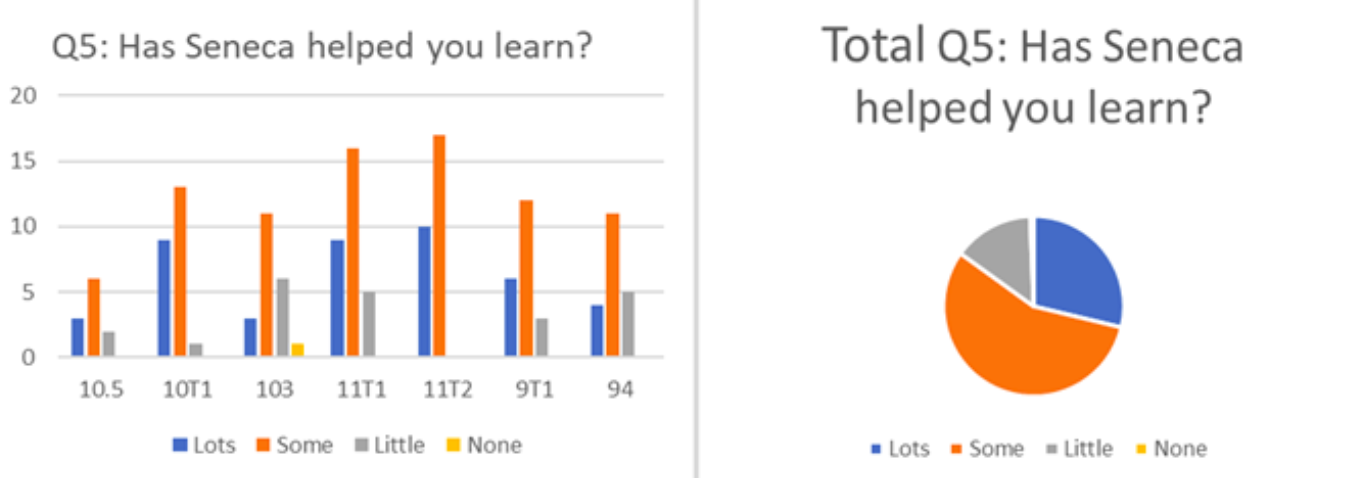

85% Of Students Convinced That Seneca Helps Them Learn
As an evidence-based platform, we are always investigating the impact Seneca has on pupils’ learning and performance. In my previous post I reported a positive correlation between hours spent on Seneca and marks on mock exams. Now, another school has kindly shared their findings with us.
Mr Tom Johns, the assistant Headteacher at Kingsmead School, is one of our Pioneer leaders and the author of our KS3 Science course. He prepared a survey to capture students’ impressions of Seneca.
153 Participating Students
In total, 153 students from 7 of his KS4 Science classes answered the survey, which contained a variety of questions. These included practical questions such as “how easy was it to sign up to Seneca?” and also performance questions such as “has Seneca helped you learn?”
You can read Mr John’s original post and conclusions directly on his blog. using this link. When you are there, do take the time to read some of his other really good posts about evidence-informed practice!
It’s very clear from the results of the survey that Seneca is easy to set up and navigate. In fact, 98% of students said so.

Another positive finding was that 85% of surveyed students think Seneca helps them learn.

The open questions were also very interesting. For example, several students reported that the pictures, images, diagrams, GIFs and videos help them learn. This is amazing because it shows the power of applying Dual Coding to learning. That is, mixing words and visual information makes it easier for students to process, understand and remember information.
Assessment Remains Key For Learning
Another noticeable finding is how students seem to appreciate the amount and variety of questions and how the platform adapts itself to each of them. For example, students said they like how the platform “repeats questions”, offers their “progress score”, has a “good variety of questions”, and “shows how much you have done”. All of this attests to the importance of assessment for learning, instead of simply using quizzes to measure performance. A huge number of research articles show that answering questions is an extremely effective learning technique.
What about your own students? Tell us what they think of Seneca! Mr John’s survey is available to download and he can be contacted via Twitter as well if you have any questions (@TJohns85). Also feel free to contact us for more ideas of how to measure Seneca’s impact on your pupils’ learning.





